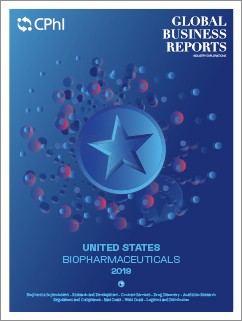
“The life sciences sector in Pennsylvania is a vibrant and fast-growing community, but it is also very fragile; more than half of the 2,800 companies are made up of 10 employees or fewer. This makes our advocacy work and shaping the environment an even more important responsibility.”
RELATED PUBLICATION
ARTICLES FROM THIS PUBLICATION
Christopher Molineaux
PRESIDENT & CEO, LIFE SCIENCES PENNSYLVANIA
What is Life Sciences Pennsylvania’s (LSPA) mandate and how has your membership evolved over the past two years?
Our mandate at LSPA remains to develop and maintain a business and public policy climate that will make Pennsylvania the most attractive place to open and operate a life sciences company. LSPA maintains two core accountabilities – public policy advocacy, where we aim to shape legislation to establish a favorable business and policy climate at macro, federal and state levels for the life sciences industry, and facilitating strategic connections, which is why the size and diversification of our membership portfolio continues to be important. We can connect any business or scientific leader with the resources they need to grow their business or advance their technologies.
Life Sciences Pennsylvania’s membership portfolio continues to grow and diversify and, as of the end of 2018, we have 817 members. Approximately 16% of our members are biotech, 11% medical device and diagnostics companies, 12% pharma, 6% research institutions and the remainders are made up of digital health companies, patient advocacy groups and contract service organizations. Our membership portfolio continues to represent the entire life sciences community of the entire state of Pennsylvania. We are unique and differentiated from our sister organizations in other states where there are multiple associations per state, in that we are the only statewide trade association for the industry. Because of increasing crosspollination and overlap within the industry, it is now more important than ever to represent the entire life sciences ecosystem in Pennsylvania.
How important is LSPA’s advocacy work for the industry given that both macro-economic and geopolitical factors are impacting the biopharmaceutical value chain more than ever before?
Advocacy work and the education of elected officials and policymakers have always been paramount for LSPA. Of most importance is the drug pricing debate, which comes and goes but continues to be an issue for the industry, although it is largely driven by the insurance companies. An example when we have been able to successfully advocate was regarding the pharmaceutical price transparency bill. We agree with transparency, except when it jeopardizes intellectual property or the proprietary information of a company. The bill would have required pharmaceutical companies to disclose all of their pricing strategies, and if they did not, they would be excluded from state formularies. Fortunately, we defeated this bill, but it demonstrates there is a lot more behind the pricing discussion than meets the eye.
How is Pennsylvania trying to differentiate itself as a life sciences hub?
Pennsylvania is very attractive to life sciences companies as we have two of the top five NIH funded research institutions – University of Pennsylvania and University of Pittsburgh. We have an incredible talent pool as there is an abundance not only coming out of the university setting, but the legacy of large pharma. The diverse mix of resources that exist in Pennsylvania is unrivalled. Moreover, we have access to capital, our geographical location is a great advantage and the cost of living in the state is affordable. As an organization, we host various conferences where we bring in investors from around the country to create networking opportunities for our members.
At the end of 2017, there were 2,800 life sciences companies across Pennsylvania, including biotech companies, large pharma, medical device companies, academic research institutions, life sciences investment organizations, digital health companies and contract services, which all directly touch the lives of patients. These companies are responsible for 112,000 direct jobs, and there is a multiplier effect on the services community surrounding these companies. The life sciences sector in Pennsylvania is a vibrant and fast-growing community, but it is also very fragile; more than half of the 2,800 companies are made up of 10 employees or fewer. This makes our advocacy work and shaping the environment an even more important responsibility.
What will be LSPA’s key objectives before we reach the presidential election cycle in 2020?
LSPA’s key objectives are to continue to engage and educate. Pennsylvania has a rapidly growing community of startup companies, and currently the life sciences industry here is the largest it has ever been. We see this as a tremendous opportunity for the future to contribute to this fast-growing industry and to create a favorable business climate in Pennsylvania.











